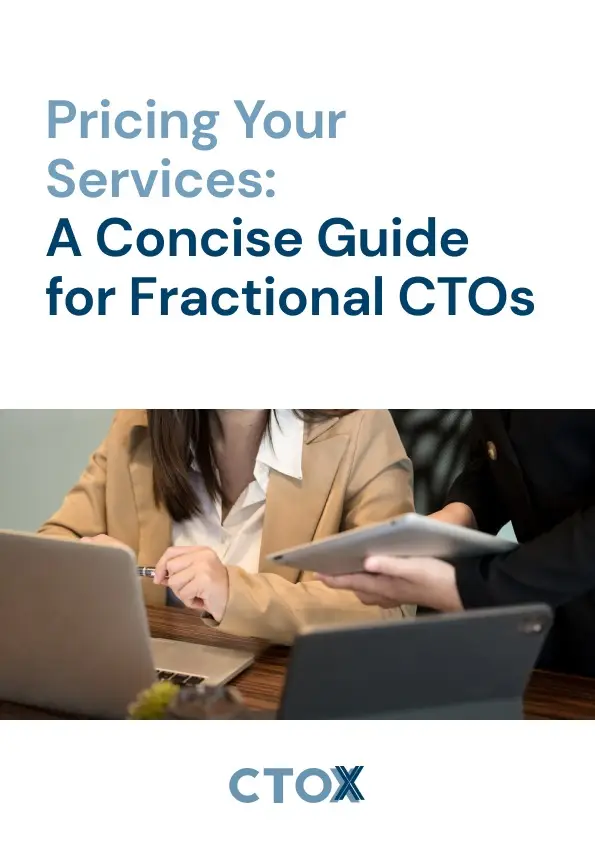Managing SaaS subscriptions can save your business time, money, and resources. Here’s what you need to know upfront:
- Key Benefits: Save costs by cutting unnecessary subscriptions, improve license usage, and make smarter software decisions.
- Common Challenges: Lack of visibility, rising costs, and security risks are major hurdles.
- Actionable Steps:
- Perform regular audits to identify unused tools.
- Track usage metrics like active users and cost per user.
- Centralize subscription data to stay organized.
- Automate renewal reminders and compliance checks.
- Cost-Saving Tips: Eliminate duplicate tools, negotiate vendor contracts, and consolidate software where possible.
SaaS Renewal Management: Everything You Need To Know
SaaS Subscription Types and Models
This section breaks down key subscription structures and performance metrics. By understanding these models, phases, and metrics, businesses can better manage costs and improve efficiency.
Pricing Models Explained
Here are some common pricing strategies used in SaaS:
- Per-User Pricing: Charges are based on the number of active users.
- Usage-Based Pricing: Costs depend on how much of a resource is consumed.
- Tiered Pricing: Offers different feature sets at varying price levels.
- Flat-Rate Pricing: A single fee provides unlimited access.
Subscription Timeline and Phases
The SaaS subscription lifecycle typically includes these stages:
- Evaluation Phase: Users test the software through trials to see if it meets their needs.
- Implementation Phase: Focuses on onboarding users and integrating the system into workflows.
- Optimization Phase: Tracks adoption rates and adjusts licenses as needed.
- Renewal Phase: Involves reviewing the software’s value and negotiating new terms.
Performance Tracking Metrics
Tracking performance is crucial for success. Metrics can be grouped into usage, financial, and technical categories. Here’s a breakdown:
| Metric Type | What to Track | Frequency |
|---|---|---|
| Usage | Active Users/License Utilization | Monthly |
| Financial | Cost per User/Department | Quarterly |
| Technical | System Performance/Uptime | Weekly |
| Security | Compliance/Access Control | Monthly |
Core Management Methods
Effectively managing SaaS subscriptions starts with structured data organization, regular usage tracking, and efficient renewal strategies.
Data Organization
Keep all subscription information centralized for better control. Your data structure should include:
| Data Category | Key Information | Update Frequency |
|---|---|---|
| Contract Details | Costs, terms, renewal dates | Monthly |
| User Access | Department distribution, permissions | Weekly |
| Vendor Information | Support contacts, account details | Quarterly |
| Compliance Data | Security certifications, data privacy | Bi-annually |
Using KPI scorecards can help you stay on top of metrics like cost per user, utilization rates, and ROI. This clarity ensures you’re always informed and ready to optimize.
Usage Monitoring
Keeping an eye on how subscriptions are used helps you spot inefficiencies and reduce waste. Here’s how:
- Quarterly Tech Audits: Pinpoint subscriptions that are redundant or underused.
- Track User Engagement: Look at login frequency, feature usage, adoption trends, and department-specific patterns.
- Monitor Key Metrics: Check active vs. inactive users, peak usage times, popular features, and integration activity.
These steps keep your subscription usage aligned with actual needs.
Renewal Management
With organized data and usage insights, you can handle renewals more effectively. Focus on these areas:
Calendar Management
- Automate renewal reminders at 90, 60, and 30 days before deadlines.
- Note cancellation notice requirements.
- Keep all contract dates in a centralized system.
Review Process
- Compare usage data with market pricing before renewing.
- Gather user feedback and feature requests.
- Assess ROI for each tool to justify renewals.
Negotiation Strategy
- Use usage data and growth forecasts to strengthen your position.
- Explore opportunities to consolidate tools.
- Evaluate competitor pricing.
- Document any issues or requested improvements to address with vendors.
For added expertise, consider involving a Fractional CTO. They can oversee tech audits, refine data policies, and ensure your subscription management aligns with your overall tech strategy while keeping costs in check.
sbb-itb-4abdf47
Tech Tools for Better Management
Managing SaaS subscriptions effectively requires the right tools to handle complex tracking and keep expenses in check.
Choosing Management Software
When picking management software, look for features that match your organization’s needs. Here are some key areas to consider:
| Feature Category | Functions to Look For | How It Helps Your Business |
|---|---|---|
| Cost Tracking | Spend analytics, alerts | Keeps expenses under control |
| User Management | Access controls, licensing | Allocates resources efficiently |
| Integration Options | API connectivity, SSO | Simplifies workflows |
| Reporting | Dashboards, exports | Supports data-driven decisions |
| Security | Compliance tools | Protects sensitive data |
A Fractional CTO can guide you in choosing tools that balance cost management with operational needs. Once the software is in place, automating key processes can make subscription management even smoother.
Task Automation
The right software allows you to automate repetitive tasks, saving time and reducing errors. Here’s where automation can make a difference:
License Management
- Set up user accounts quickly.
- Deactivate accounts for employees who leave.
- Reallocate unused licenses dynamically.
Cost Control
- Get alerts when spending nears a set limit.
- Receive reminders for renewal dates.
- Analyze usage patterns to identify savings opportunities.
Compliance
- Track security certifications automatically.
- Schedule regular compliance checks.
- Enforce policies consistently.
System Connections
Connecting your management software to core business systems is crucial for seamless operations. Focus on these integration areas:
Core Systems Integration
- Link HR systems for smooth employee onboarding and offboarding.
- Sync with financial tools to track expenses accurately.
- Use identity management systems for secure access control.
Data Flow Management
- Monitor real-time usage across systems.
- Automate reporting for better insights.
- Enable analytics across multiple platforms.
A Fractional CTO can oversee the setup of a well-integrated tech infrastructure. This ensures your systems stay secure, efficient, and ready for ongoing improvements.
Cost Reduction Methods
Managing SaaS subscriptions effectively means having a clear plan to keep costs in check.
Finding Unused Subscriptions
Unused subscriptions can quietly drain your budget. Here’s how to identify and address them:
| Usage Level | How to Spot It | What to Do |
|---|---|---|
| Zero Usage | Login tracking, API logs | Cancel immediately |
| Low Usage | Activity metrics, user feedback | Assess if it’s still needed |
| Irregular Use | Analyze usage patterns | Consider temporary licenses |
Key areas to monitor include:
- Login frequency and last login dates
- How often key features are used
- The ratio of users to licenses
Once you’ve identified waste, focus on cutting out subscriptions that add no value.
Removing Duplicate Tools
Duplicate tools can often be consolidated to save money without sacrificing functionality:
| Tool Type | Overlap Areas | Why Consolidate? |
|---|---|---|
| Project Management | Task tracking, collaboration | Simplifies workflows and cuts costs |
| Communication | Chat, video conferencing | Streamlines communication tools |
| File Storage | Cloud storage, sharing | Centralizes data management |
Look for overlapping functionalities using expert insights and consolidate where possible to maintain efficiency while reducing expenses.
Vendor Price Negotiations
After trimming unnecessary tools and duplicates, turn your attention to vendor contracts. Better terms can lead to substantial savings. Here’s how:
- Bundle Evaluation: Check subscription tiers and eliminate unused premium features.
- Contract Optimization: Review usage data to decide on the best contract length and user count. Multi-year agreements can lower costs for essential tools.
- Strategic Timing: Negotiate at the right time, such as during:
- Contract renewal periods
- Vendor fiscal year-ends
- Major product launches
Expert negotiation strategies can help you secure favorable terms while keeping your technology stack efficient and effective.
Conclusion
Key Steps Review
Managing SaaS subscriptions effectively can lead to both cost savings and improved efficiency. Here’s a quick overview of the main areas to focus on:
| Management Area | Key Actions | Expected Outcomes |
|---|---|---|
| Infrastructure | Perform tech audits and streamline systems | Lower costs and better scalability |
| Monitoring | Use KPI scorecards to track usage | Smarter decisions and reduced waste |
| Cost Control | Eliminate redundant tools and renegotiate contracts | Potential savings of $200,000+ annually |
| Strategy | Align software with business objectives | Improved operational efficiency |
SaaS management isn’t just about cutting costs. It’s about taking a structured approach – like regular audits and clear performance tracking – to support long-term growth and ensure your operations run smoothly. These steps are essential for staying agile as your business evolves.
Next Steps
To keep your SaaS subscriptions under control:
- Audit Your SaaS Ecosystem
Take a deep dive into your tools to spot redundancies and uncover cost-saving opportunities. - Set Up KPI Scorecards
Track metrics like monthly expenses, user adoption, usage levels, and ROI to stay informed. - Optimize Your Software Portfolio
Make sure your tools align with your business goals. If needed, consult experts like fractional CTOs for guidance. CTOx LLC (https://ctox.com) offers services to help with strategic alignment.







